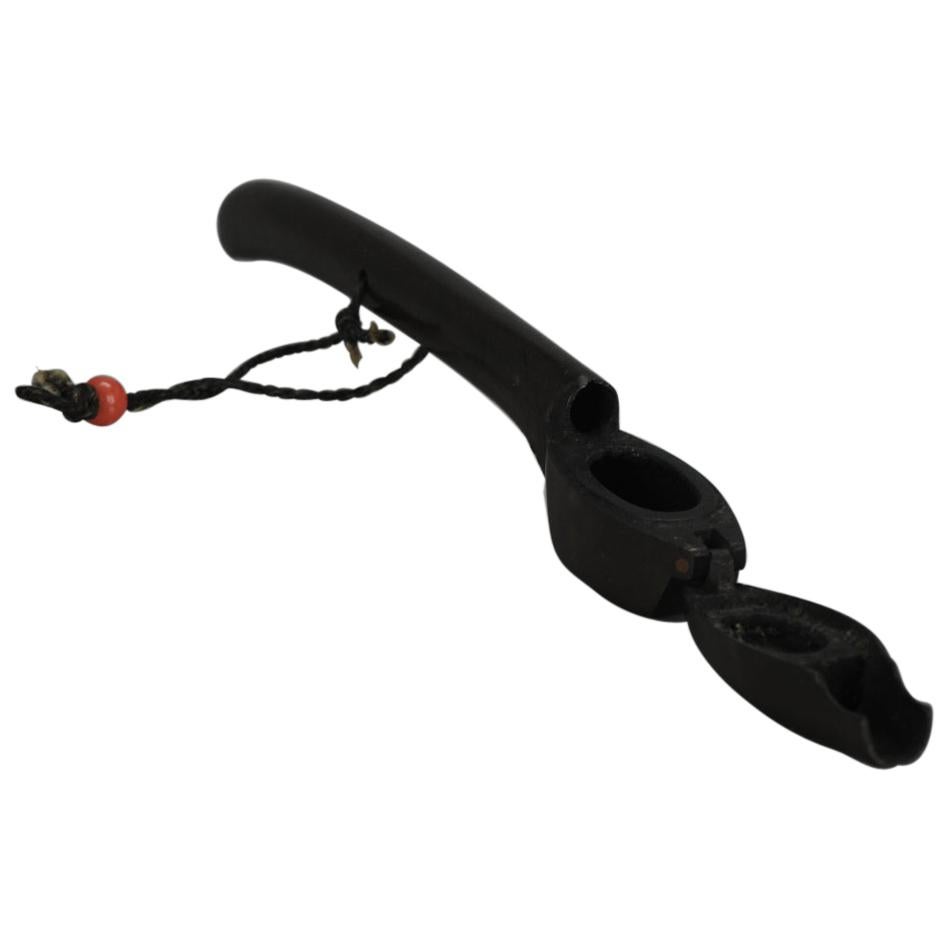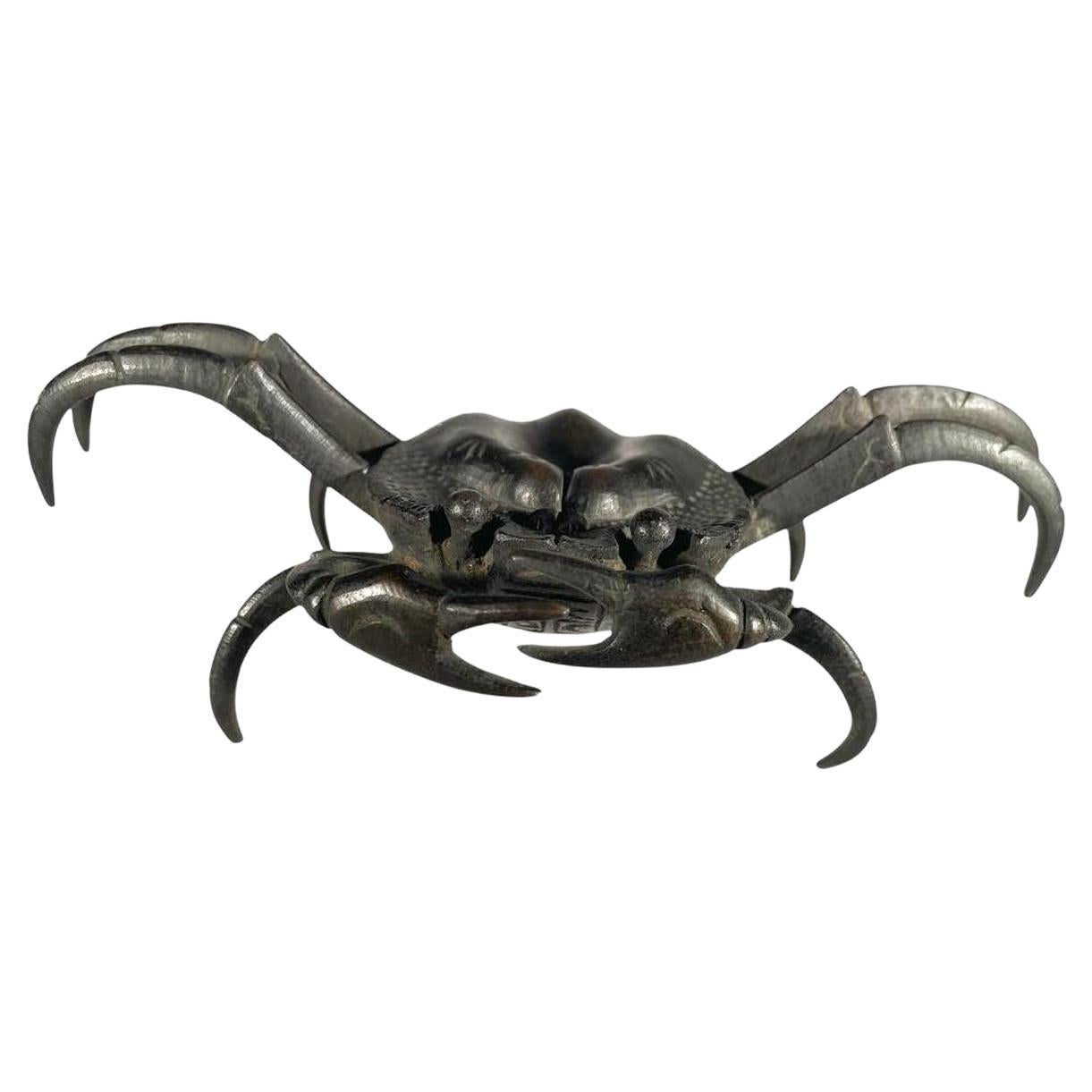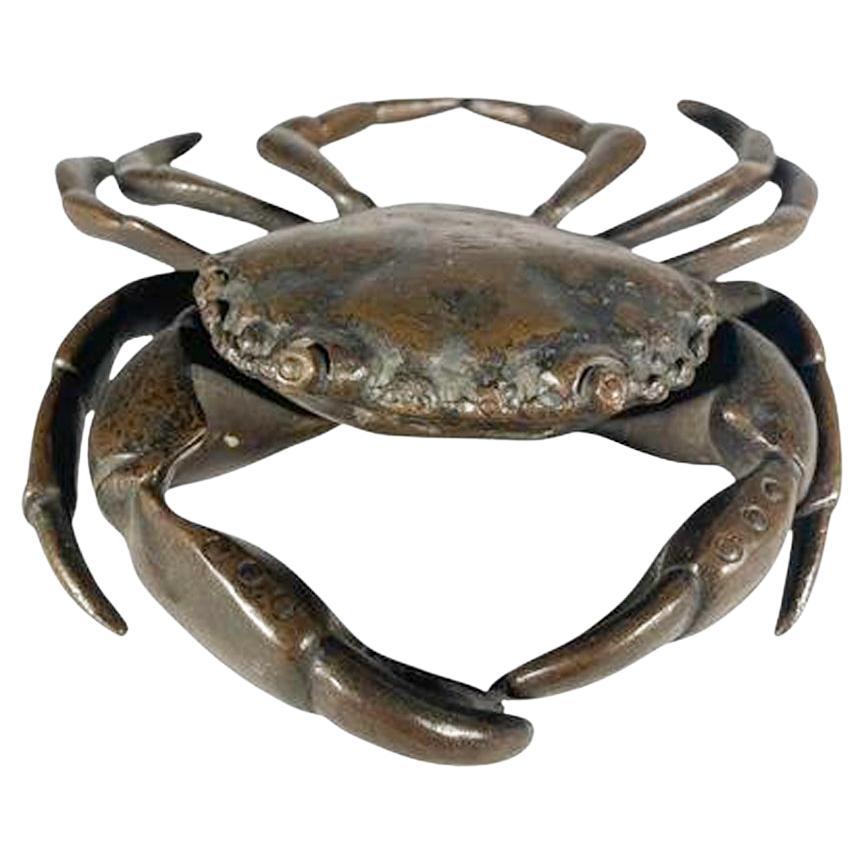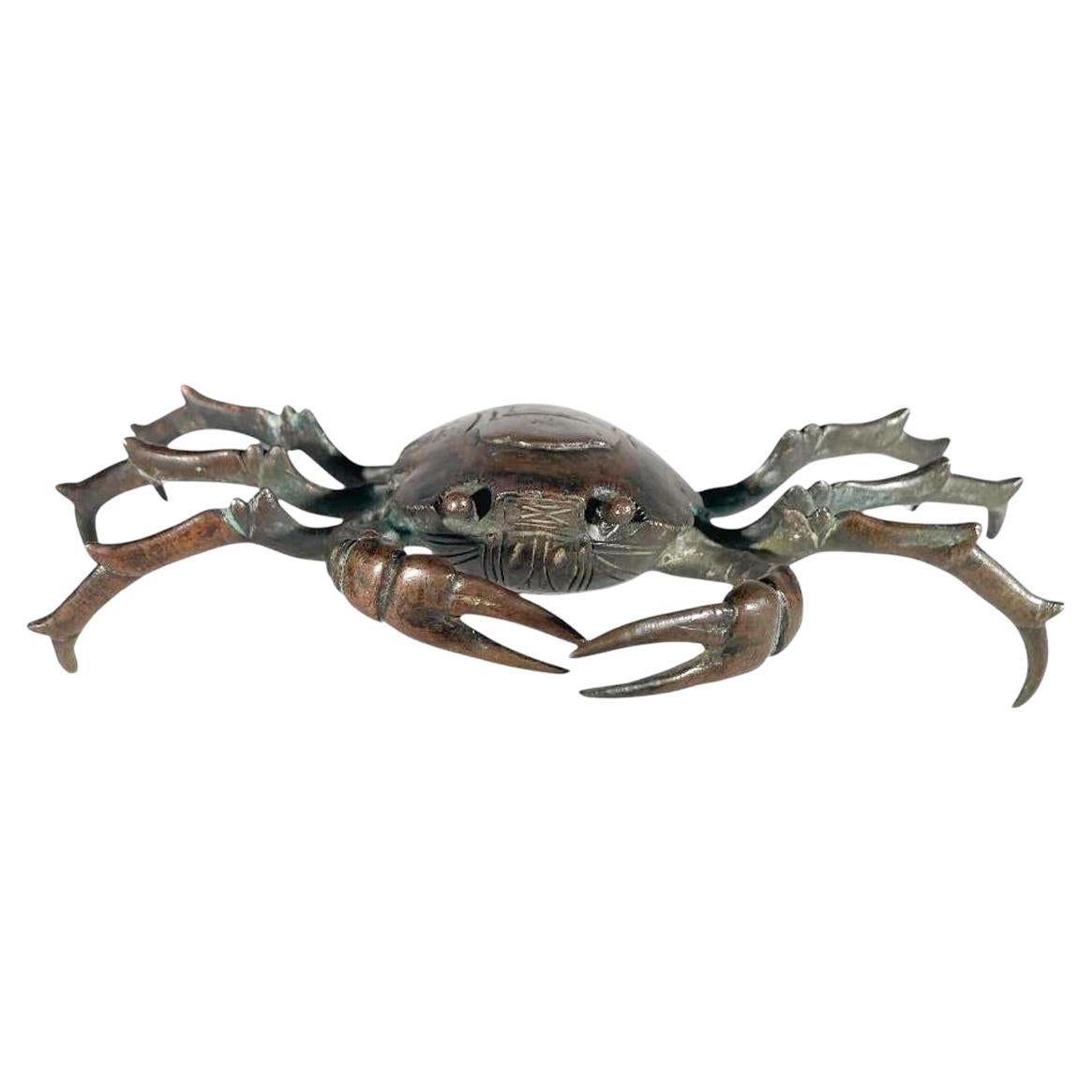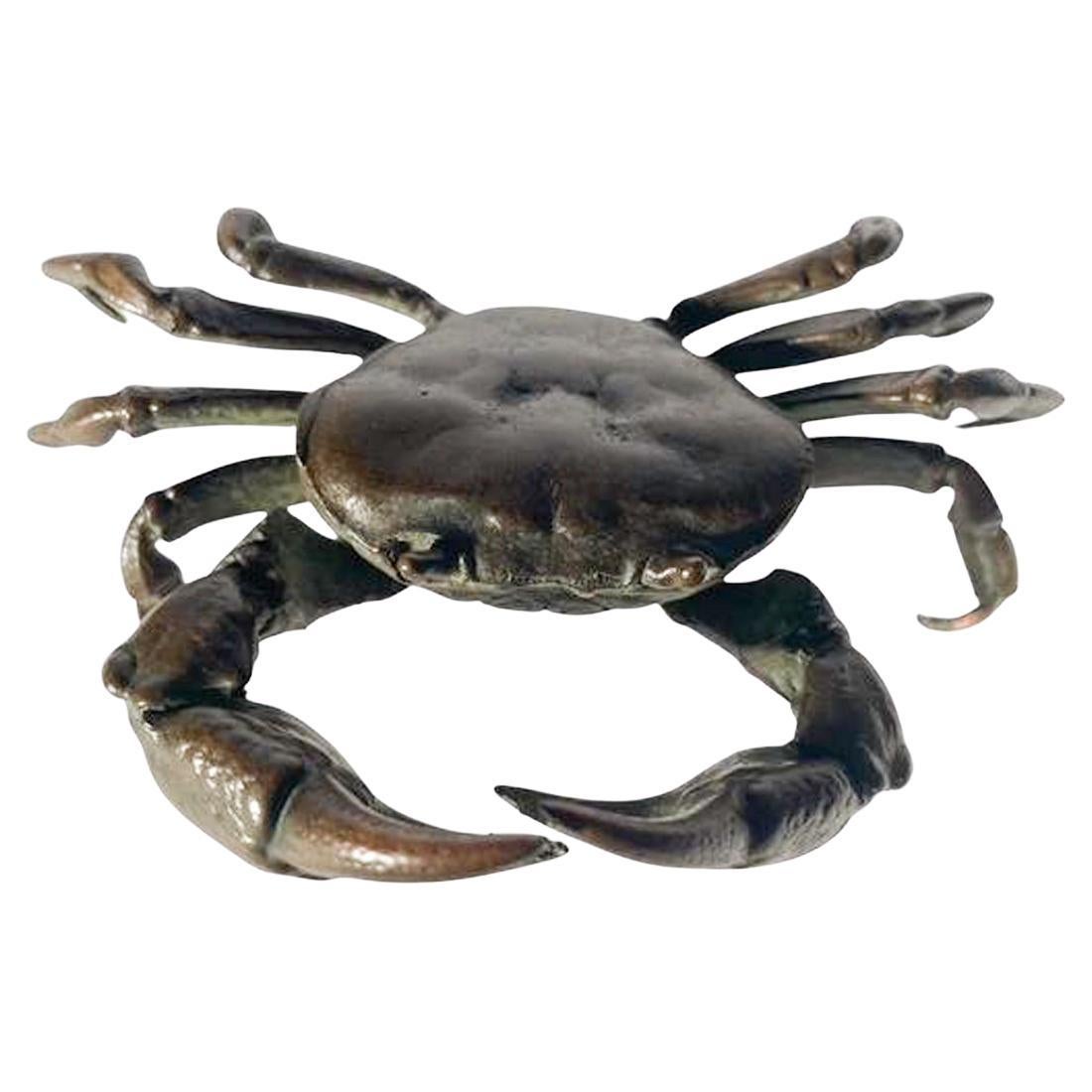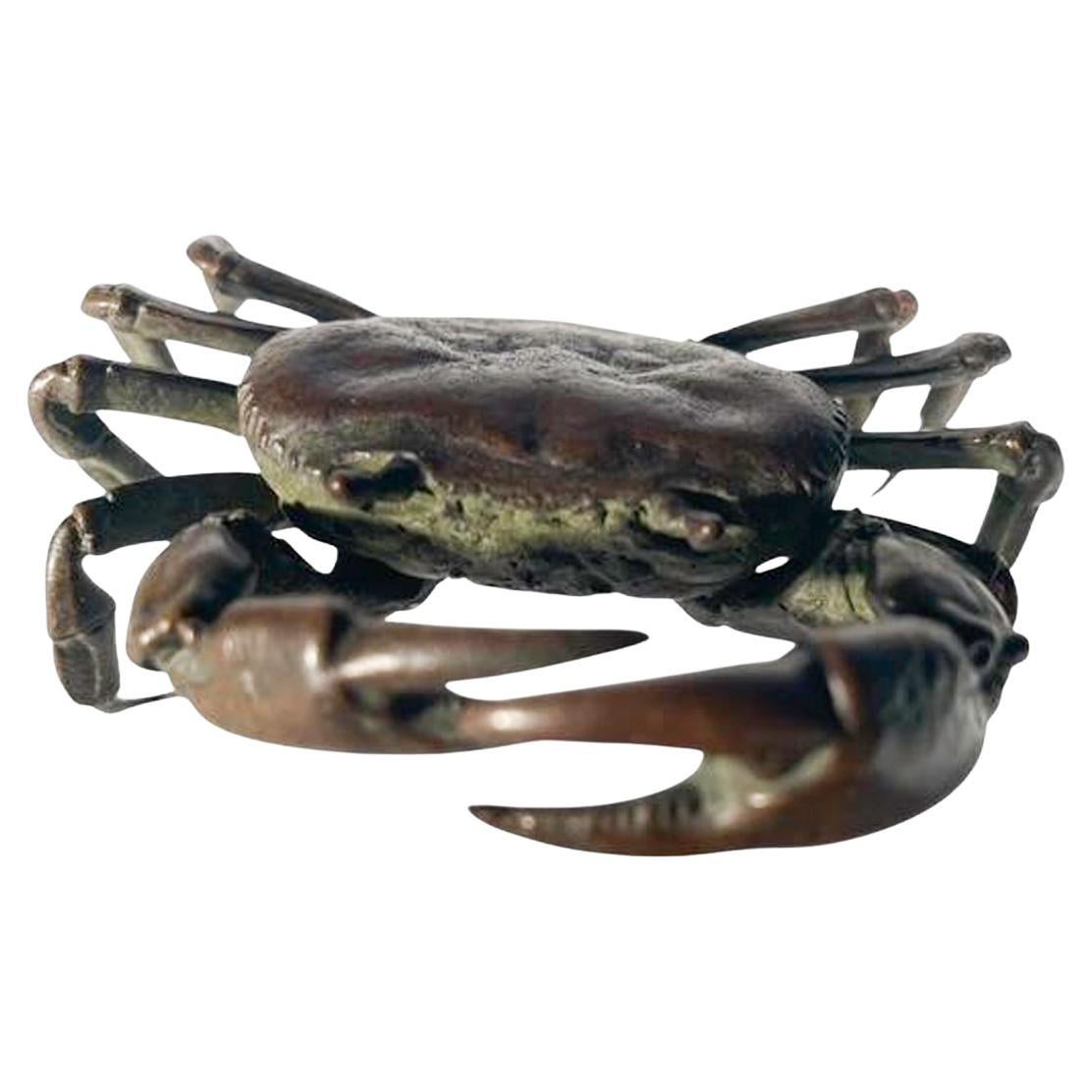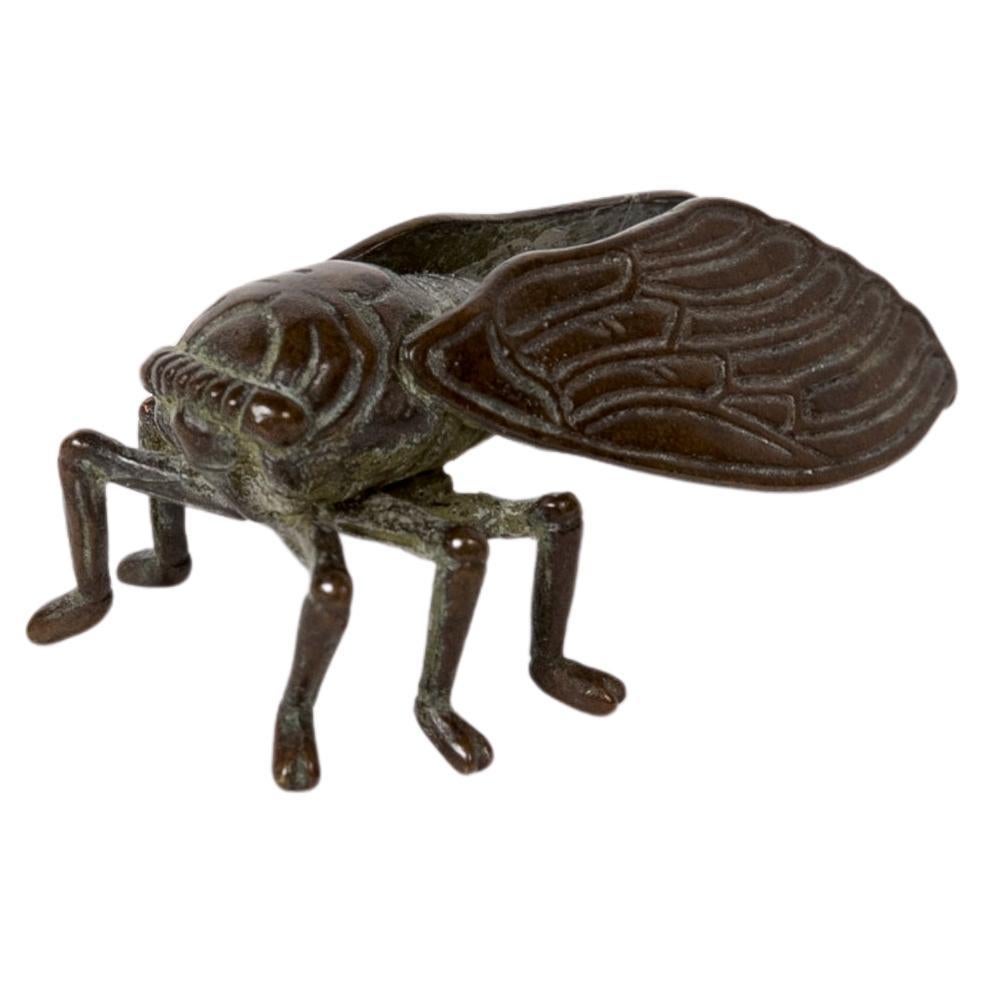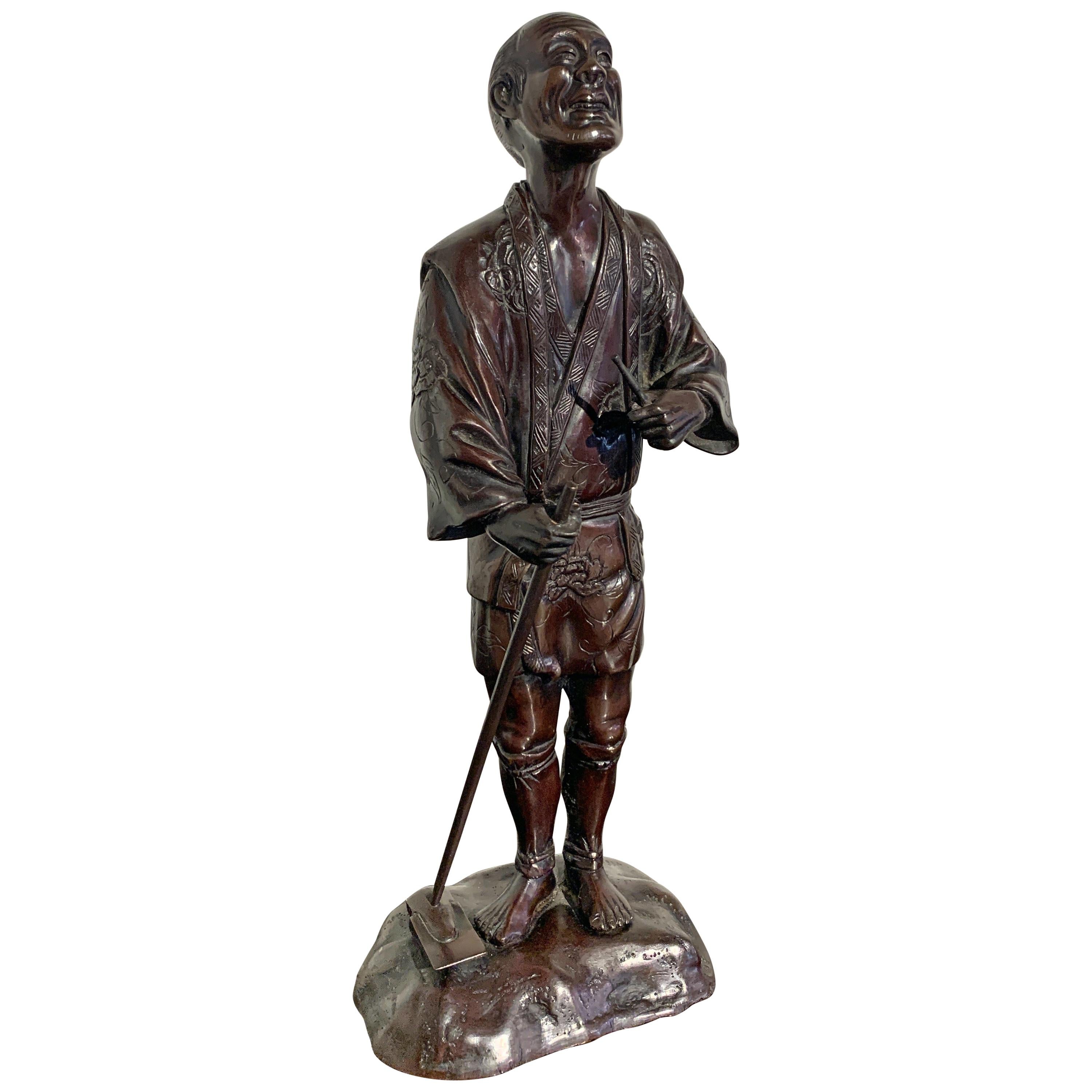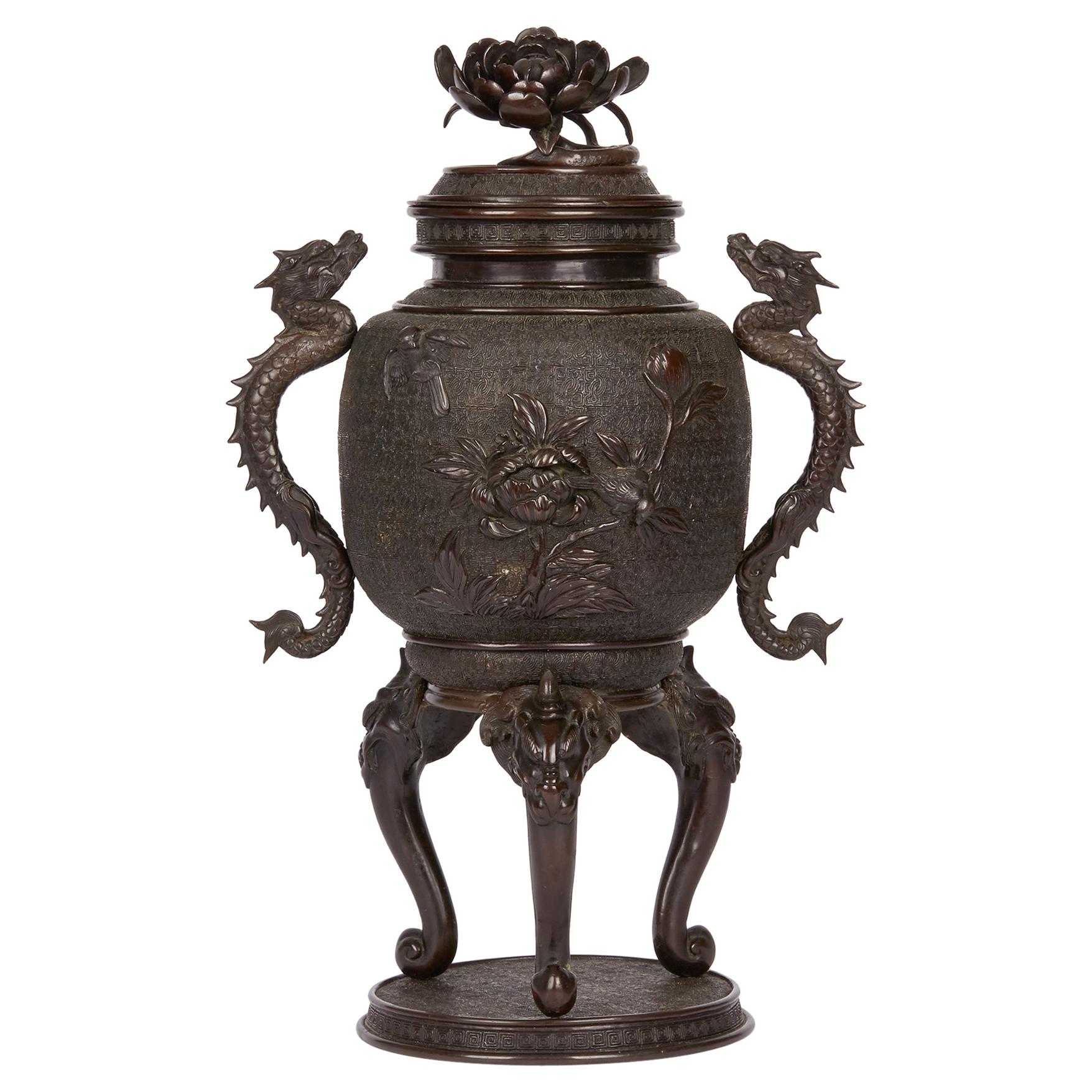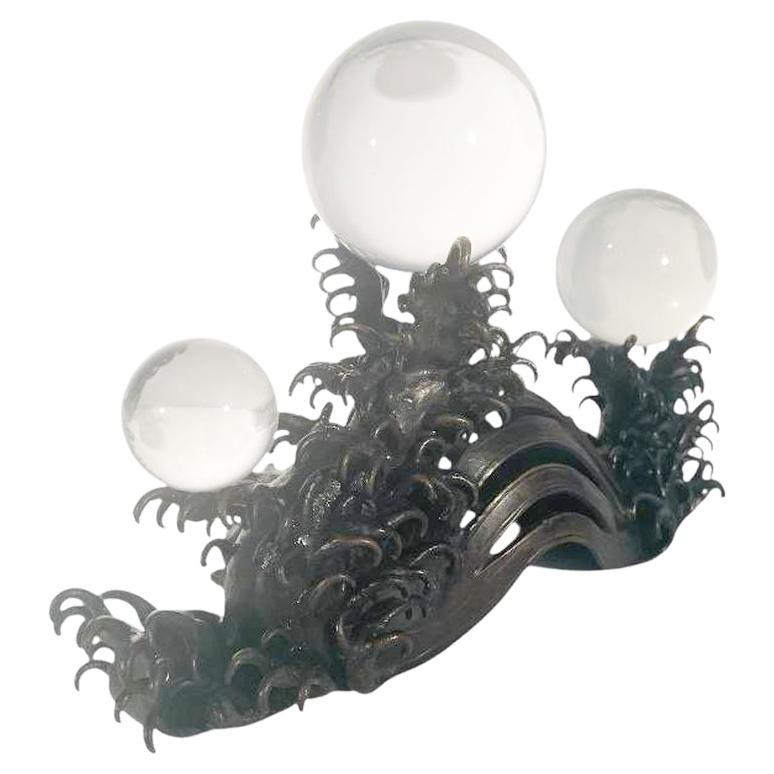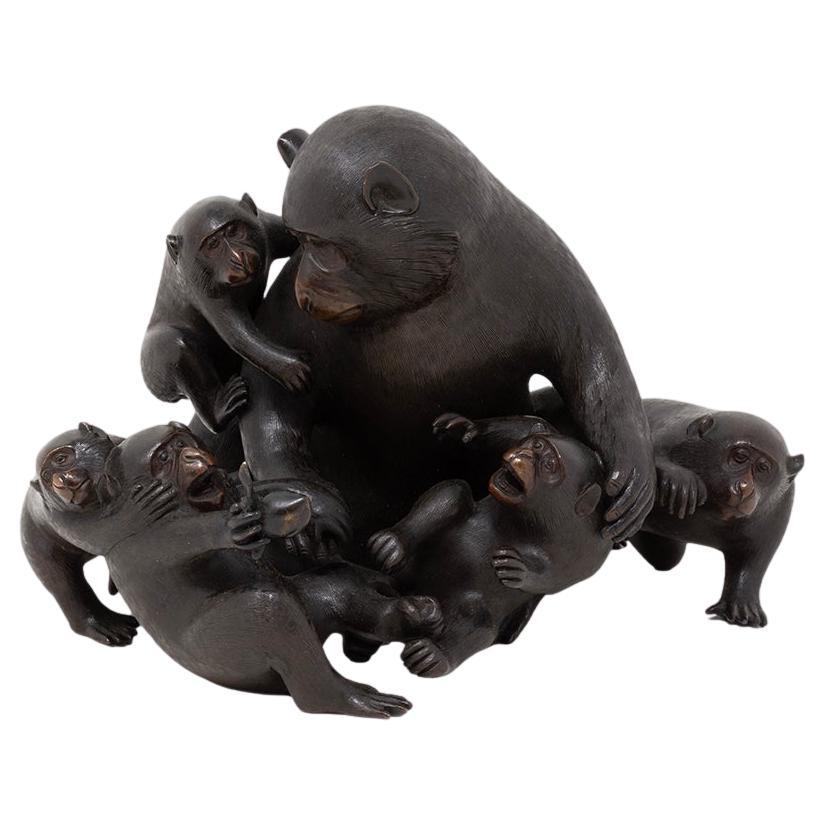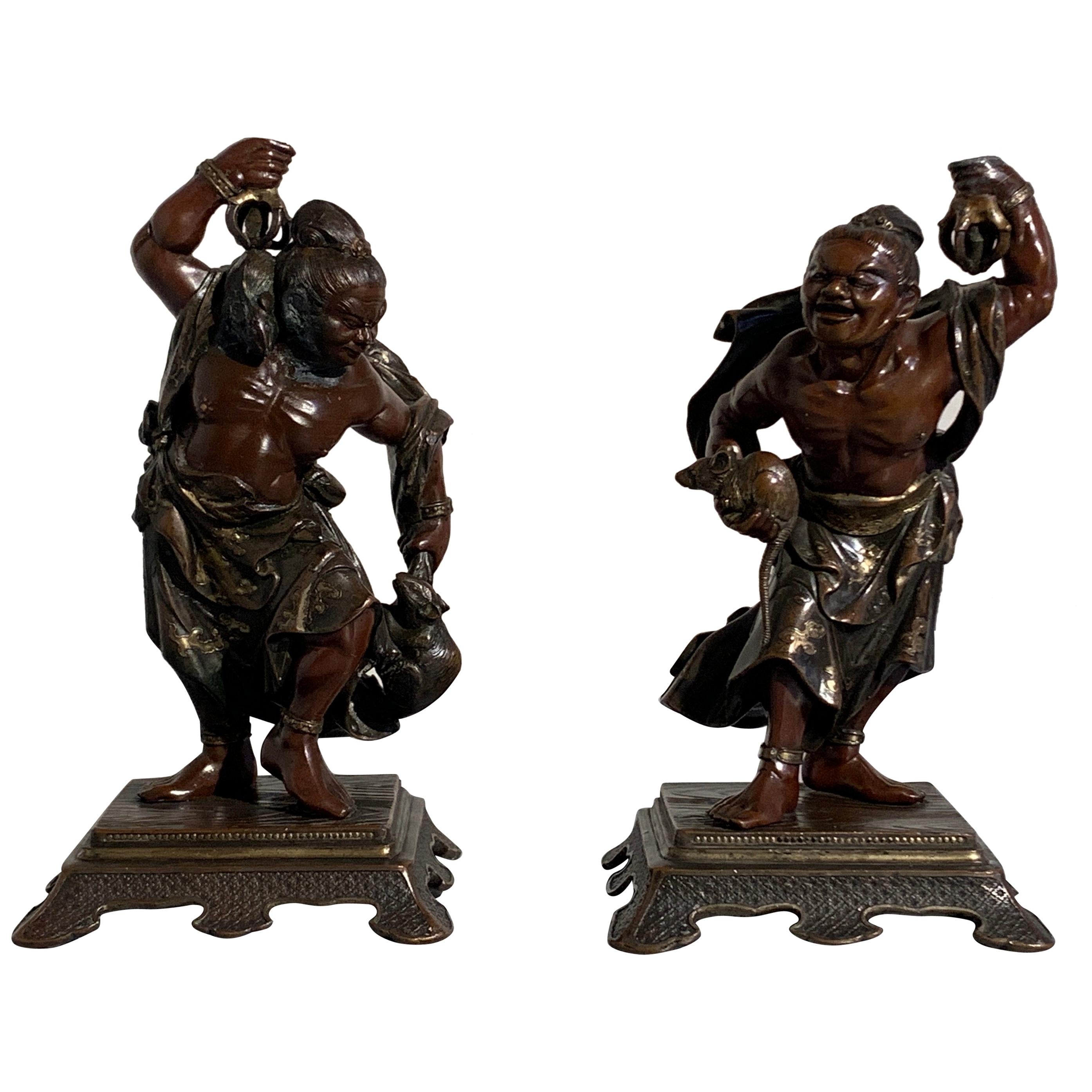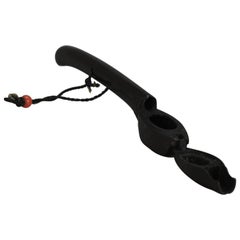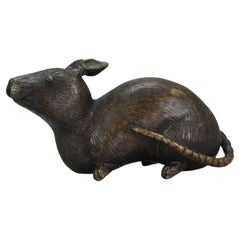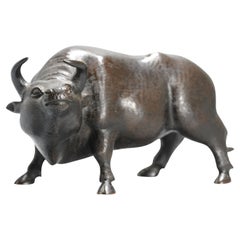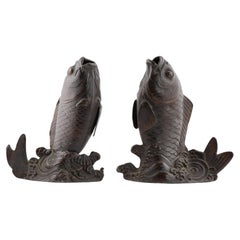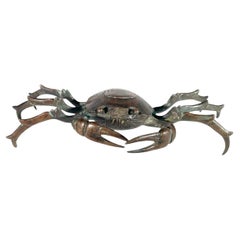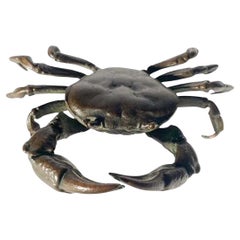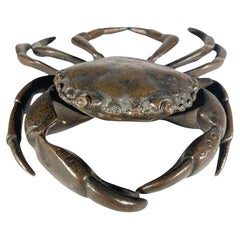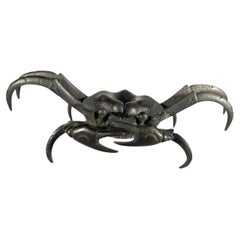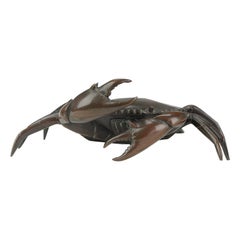
Antique Bronze Meiji Okimono Inkpot of a Crab, 19th Century, Japan, Japanese
View Similar Items
Want more images or videos?
Request additional images or videos from the seller
1 of 15
Antique Bronze Meiji Okimono Inkpot of a Crab, 19th Century, Japan, Japanese
$4,725.81List Price
About the Item
- Dimensions:Height: 18.51 in (47 cm)Diameter: 16.93 in (43 cm)
- Materials and Techniques:
- Place of Origin:
- Period:
- Date of Manufacture:19th Century
- Condition:Wear consistent with age and use. Overall Condition No damages found. Weight 1418 grams. Size 225mm wide, 90mm high and145mm depth.
- Seller Location:Amsterdam, NL
- Reference Number:1stDibs: LU4863222945062
About the Seller
5.0
Platinum Seller
Premium sellers with a 4.7+ rating and 24-hour response times
Established in 2015
1stDibs seller since 2019
264 sales on 1stDibs
Typical response time: 2 hours
Authenticity Guarantee
In the unlikely event there’s an issue with an item’s authenticity, contact us within 1 year for a full refund. DetailsMoney-Back Guarantee
If your item is not as described, is damaged in transit, or does not arrive, contact us within 7 days for a full refund. Details24-Hour Cancellation
You have a 24-hour grace period in which to reconsider your purchase, with no questions asked.Vetted Professional Sellers
Our world-class sellers must adhere to strict standards for service and quality, maintaining the integrity of our listings.Price-Match Guarantee
If you find that a seller listed the same item for a lower price elsewhere, we’ll match it.Trusted Global Delivery
Our best-in-class carrier network provides specialized shipping options worldwide, including custom delivery.More From This Seller
View AllAntique Japanese Bronze Hatate 19th C Meiji Inkpot Japan Unsigned
Located in Amsterdam, Noord Holland
Lovely and very detailed piece. .
If someone were to bring up the topic of Japanese antiques, what images would come to your mind? Kimono? Swords? Armor? Possibly netsuke? A few might even know what an inro is. How about the yatate?
I have shown a yatate to many of my Japanese acquaintances here in Tokyo, and was surprised to discover that most did not even know what it was! Artists and calligraphers usually knew right away, though.
A yatate (pronounced yah-tah-teh) is a Japanese portable writing set. The yatate has been around since the Kamakura period (1185-1333). It contains a traditional Japanese bamboo brush and an ink pot filled with cotton or silk which holds liquid sumi ink.
Yatate literally means "arrow Stand."
The Japanese traditional way of writing is with a brush (fude) and ink (sumi). Before the invention of the yatate, whenever anyone wanted to write or draw in ink, he had to make his own ink by grinding the ink stick...
Category
Antique 19th Century Japanese Sculptures and Carvings
Materials
Bronze
$567 Sale Price
20% Off
Antique Bronze Meiji Okimono of a Rat Japan, 19th Century
Located in Amsterdam, Noord Holland
Nicely made artifact/Okimono of a Rat. In bronze with brown patina, representing a rat.
Okimono (置物, oki-mono) is a Japanese term meaning "ornament for display; objet d'art; decorat...
Category
Antique 19th Century Japanese Meiji Animal Sculptures
Materials
Bronze
$862 Sale Price
20% Off
Antique Edo/Meiji 19th c Ox Okimono Bronze Japanese Statue Morimasa Signed
Located in Amsterdam, Noord Holland
Country of origin: Japan
Age: Edo/Meiji Period 19th century
Size: 19 cm x 11 cm Diameter
Condition: Good condition. SIze: 19x11cm
Period
19th century
Category
Antique 19th Century Chinese Planters, Cachepots and Jardinières
Materials
Porcelain
$2,682 Sale Price
20% Off
Antique Edo/Meiji 19th c Fish Incense Burners Okimono Bronze Japanese Statue
Located in Amsterdam, Noord Holland
Country of origin: Japan
Age: Edo/Meiji Period 19th century
Size: 11 cm high
Condition: Good condition. SIze: 19x11cm
Period
19th century
Category
Antique 19th Century Chinese Planters, Cachepots and Jardinières
Materials
Porcelain
$2,682 Sale Price
20% Off
Antique Edo/Meiji 19C Wildboar / Sanglier Okimono Bronze Japanese Japan
Located in Amsterdam, Noord Holland
Nicely made Okimono.
Good condition, just some ware.
Size: 14.5x9.8CM LengthxHeight
Condition
Good condition, just some ware. Size: 14.5x9.8CM LengthxHeight
Period
19th century
Category
Antique 19th Century Japanese Meiji Metalwork
Materials
Porcelain
Old Wooden Netsuke Japanese Fruit Figure Meiji Period, 19/20th Century
Located in Amsterdam, Noord Holland
Lovely and very detailed piece. Unsigned. Japan 19th or 20th century.
Weight: 15 grams
Provenance: Collected in the 1980’s. From the collection of Clemens Merkelbach van Enkhuize...
Category
20th Century Japanese Meiji Sculptures and Carvings
Materials
Wood
You May Also Like
Large Japanese Meiji Period Bronze Crab (B) Okimono
Located in Chapel Hill, NC
Large Japanese naturalistically modeled bronze okimono in the form of a crab. One of 5 designated by the (B) in the title.
Category
Antique Late 19th Century Japanese Meiji Sculptures and Carvings
Materials
Bronze
Signed Japanese Meiji Period Bronze Crab (E) Okimono
Located in Chapel Hill, NC
Signed Japanese okimono of a realistically modeled crab raised up on its toes and with claws raised. One of 5 designated by (E) in the title.
Category
Antique Late 19th Century Japanese Meiji Sculptures and Carvings
Materials
Bronze
Large Japanese Meiji Period Bronze Crab (A) Okimono
Located in Chapel Hill, NC
Large Japanese bronze okimono of a realistically modeled crab. This is one of 5 designated by the (A) in the title.
Category
Antique Late 19th Century Japanese Meiji Sculptures and Carvings
Materials
Bronze
Large Japanese Meiji Period Bronze Crab (C) Okimono
Located in Chapel Hill, NC
Realistically modeled Japanese okimono of a crab raised on its toes. I of 5 designated by the (C) in the title.
Category
Antique Late 19th Century Japanese Meiji Sculptures and Carvings
Materials
Bronze
Signed Japanese Meiji Period Bronze Crab (D) Okimono
Located in Chapel Hill, NC
Signed Japanese bronze okimono of a naturalistically modeled crab on its toes and with claws raised. One of five designated by (D) in the title.
Category
Antique Late 19th Century Japanese Meiji Sculptures and Carvings
Materials
Bronze
Japan bronze cicada sculpture okimono Meiji
Located in PARIS, FR
Bronze sculpture with dark brown patina of a cicada.
The cicada (in Japanese, semi) is considered as a symbol of humanity. Together with a praying mantis and a spider, they represen...
Category
Antique Late 19th Century Japanese Japonisme Sculptures and Carvings
Materials
Bronze
